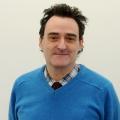THERE were gasps of astonishment when the latest find from community archaeology digs were unveiled for the first time.
Prof Simon Keynes, of Cambridge University, flanked by David Spurling of Hyde900 unveiled the finds from this year’s Hyde900 Community Dig in King Alfred Terrace at St. Bartholomew’s Church, Hyde, last Friday.
Revealed to an invited audience of professors, councillors and representatives of Hampshire Cultural Trust was a reconstruction of a 12th century arch from the cloister area of Hyde Abbey.
The excavation, which involved more than 150 volunteers in April, had turned up the various components of the arch in an extraordinary half-an-hour period towards the end of the three-day dig in the gardens of Chris Prior and Justine Field.
Because of the potential importance of the find,, the wraps were kept on the discovery for six months for further research and to present the conclusive results in a striking setting.
“What we had unearthed was a series of beautifully carved voussoirs [wedge shaped stones which made up the arch] together with a number of abacuses [square bases placed upon capitals],” said Mr Spurling.
“This was astonishing enough in itself. But then the story became even more extraordinary when it was suggested by Dr John Crook, the architectural consultant to the cathedral, that there might be a relationship between these stones and the celebrated capitals and ‘springer stone’ from Hyde Abbey which are displayed in St. Bartholomew’s.
“So we took an abacus and one of the voussoirs across to St. Bart’s and compared their dimensions. They fitted exactly. In other words we now had a complete matching set of capital, abacus, springer stone and voussoirs which means we could reconstruct the cloister’s arches in exact detail.”
The significance was endorsed by Martin Biddle, the leading authority on Winchester’s archaeology, who said: “These discoveries demonstrate the outstanding nature of the architecture of this hugely important abbey.”
, the final resting place of Alfred the Great. In my opinion, the craftsmanship employed is one of the finest example of the mason’s art for this period in the UK.”
As Dr. Crook explained following the unveiling, it was important to have the involvement of professional archaeologists once these delicate finds started to emerge from the earth.
However most of the early work was undertaken by volunteers under the supervision of members of WARG, Hyde900’s community excavation partner.
“What was most gratifying was the involvement of a large number of children from nearby St. Bede School with whom we had recently worked on our first school archaeology day,” said Mr Spurling. “Who knows, maybe it will inspire some of them to go on to become professional archaeologists in the years ahead.”
The unveiling was a high point of Hyde900’s King Alfred Weekend which also included a lecture by Prof Keynes who addressed a packed St. Bart’s about the ‘Liber Vitae’, Hyde Abbey’s ‘Book of Life’ which listed the abbey’s monks, patrons and benefactors across six hundred years.
‘Liber Vitae’ also includes key historical documents such as King Alfred’s will and extraordinarily valuable illustrations such as the 11th century depiction of King Cnut and his queen, Emma, presenting a Gold Cross to New Minster. At the end of his lecture Prof Keynes generously gave a facsimile version of the Liber Vitae to Canon Cliff Bannister of St. Bartholomew’s. Prof Biddle also spoke to give interesting new insights into the development of New Minster, the predecessor church to Hyde Abbey.
Other well-attended events over the weekend included the annual Hyde Soldiers commemoration of ‘the fallen’ from Hyde during 1917 in the First World War.
General Sir Anthony Walker presented an authoritative account of the events of that year culminating in the battle of Passchendaele accompanied by contemporary songs from the Fusion Choir.
Householders from the fatalities’ original addresses placed memorial flags on a map of Hyde. This was followed on Saturday by a lecture by Prof John Collis of Sheffield University on the history of archaeology in Winchester which took the audience back to the 1950s and 1960s when the exploration of the city’s deep archaeological heritage was just beginning. Workshops, guided tours and the launch of the Heritage Lottery Funded ‘Project Space’ an arts initiative inspired by the Hyde Abbey story - including notably the experience of pilgrimage - completed a packed four days of activity.
Hyde900 chairman Steve Marper said: “It’s been a very special King Alfred Weekend. We’ve had the participation of world leading authorities from Oxford and Cambridge lend their expertise and support to what is an enormously important community–based event.”
Meanwhile a project based on artists’ response to the abbey, Project Space, continues until November 5 with work by Hyde and London-based artists, Eileen White, Noriko Suzuki-Bosco, Fionn Duffy, Cherng-Min Tong, Will Fairbrother, Alberto Ruiz Soler and Sonia Barrett exhibited in St Bartholomew’s Church, SO23 7DF and online.
For more information go to: www.hyde900.org.uk













Comments: Our rules
We want our comments to be a lively and valuable part of our community - a place where readers can debate and engage with the most important local issues. The ability to comment on our stories is a privilege, not a right, however, and that privilege may be withdrawn if it is abused or misused.
Please report any comments that break our rules.
Read the rules here